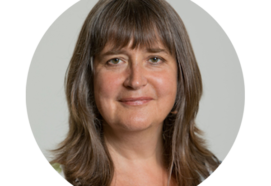Four years ago I adopted a little girl. I work as a psychiatrist, I had a year’s experience of CAMHS psychiatry and I already had two thriving birth children. My husband and I attended the adoption course at which basic attachment training was delivered. I believed myself ideally suited to support an adopted child.
I am grateful for the opportunity to recount my experience of inviting a traumatised child into my family. If I can persuade those working in children’s services to change this experience, even for just one family, I will have achieved something worthwhile.
My child arrived in the household after a week’s handover from the foster family. She hadn’t been allowed to say “goodbye” to the family she had lived with for over a year because the social workers believed this would further traumatise her. We were advised that the foster carers couldn’t have further contact for at least six months.
On day one I invited my daughter to join me for lunch. She responded that she would rather cut my head off, watch the blood coming down my neck and set fire to my house. She was three years old. This was the start of the most traumatic two years of my life.
My daughter commanded my attention constantly and, if she didn’t get it, she would be violent to my birth children and animals. She told fantastic lies about her teacher, her foster carers and I, which would have been dangerous had the stories been believable. She was also oppositional to the extreme and laughed at me if I showed any sign of resulting negative emotion. She, however, charmed other adults including social workers, extended family members, friends, and her new father. After just six weeks I felt utterly broken. Her social worker told me that if she was going to attach, she would have done so by now, and was disbelieving about her behaviours. Had it not been for my own father, and later my husband, observing her behaviour towards me without her knowledge, I would have been completely isolated. Finally, I was believed, but not before I was suffering from significant secondary trauma related symptoms myself.
For the first few months my girl pleaded inconsolably for her foster carers. I eventually took the situation in my own hands and invited them to see her.
Role on four years and I have a loving, and loved, daughter. She still becomes “dysregulated” on a regular basis, but she is very rarely aggressive and when she is, she expresses remorse. She can still be controlling, but she doesn’t lie – she is now perhaps too literal and honest for her own good, she is not at all oppositional now, and she wants to please. I am hopeful for her future.
I strongly believe that the following have resulted in this progress. I was introduced to a lady with two similar children. She “got it” in a way that many professionals did not seem to and we supported each other. Attending a “Brain-based parenting” course by Dan Hughes and Jonathan Baylin, and training about the neurodevelopment of child trauma by Bruce Perry, helped me to understand my child and the reasons for her behaviour. I parented using Dan Hughes’ PACE model* and later joined the National Association for Therapeutic Parents, a parents’ support group. I believe that if I had been armed with this knowledge from the start, I would have been far better equipped to help my child initially. I feel significantly let down that I wasn’t.
A few months of Theraplay** and Dyadic Developmental Psychotherapy*** were secured. I am not sure how much this directly benefitted my daughter but having a thorough assessment and receiving a diagnosis, and the resulting validation and consequent support from the school, was a game changer. I also had a safe outlet to discuss my feelings and fears with someone who was witness to my child’s difficulties and this made it easier to look after her from week to week. Finally, the support to secure a separate diagnosis of ADHD, and commencing medication for the same, has made an indescribable positive difference. I know that this diagnosis is often dismissed in children who have developmental trauma with ADHD like symptoms, but I would argue that if they fulfil the diagnostic criteria, an assessment for ADHD should be completed as the aetiology of the ADHD symptoms is not stipulated in the diagnostic criteria. The medication has helped my daughter to make friends – she no longer impulsively hits them, to progress academically and has improved our relationships with her significantly.
During my journey I have met many people with such children who are failing to secure support from any services despite years of seeking help. Attachment disorder and developmental trauma in many localities are not deemed “CAMHS business”. Van der Kolk points out that by adulthood it is often these people who clog up our mental health hospitals and prisons. I can confirm that as an adult psychiatrist many of my patients had similar backgrounds to my daughter. I am now far more equipped to validate and help them. My belief is that for children this should absolutely be CAMHS core business – if not theirs, then whose?
Oh, and one final point – please never say “that is normal child behaviour!” to the parent of a child with an attachment disorder or developmental trauma. The parent will most likely be fantasising about punching you on the nose… and you will probably deserve it!
*PACE model – An attitude or stance of Playfulness, Acceptance, Curiosity and Empathy; qualities that are helpful when creating emotional safety and when trying to stay open and engaged with another person. PACE is a way of thinking, feeling, communicating and behaving that aims to make the child feel safe.
** Theraplay is a child and family therapy for building and enhancing attachment, self-esteem, trust in others, and joyful engagement. It is based on the natural patterns of playful, healthy interaction between parent and child and is personal, physical, and fun.
*** Dyadic Developmental Psychotherapy (DDP) is the treatment of children who have experienced abuse and neglect and who demonstrate ongoing problems related to attachment and trauma.
This is an independent article and the views are not necessarily those of ACAMH.



Discussion
This is a brilliant blog and is so familiar from the helpline calls to Adoption UK in Wales where I work. It’s great to have not only the challenges but also the hope of positive change set out so clearly. I wish this article could be read by all CAMHS staff and others working with adopted children.
It is hard to believe, but many social workers do not know about attachment difficulties and certainly not about the PACE way of parenting – it is deemed to be the premise of post adoption social work and child protection SW’s have very little understanding.
Most children’s homes – full of children with attachment problems – do not know about this either.
This should be considered standard training for all people working with attachment disordered children and young adults.
This is brilliant. Thanks for sharing your experiences and I’m glad your daughter is settling. I will use this in my own work and share with potential adopters and foster carers. I look forward to listening to the podcast too. Darren.
My husband and I adopted 2 brothers six and a half years ago. I also work in CAMHS. We have always maintained contact with their Foster Carers and I think this was an integral part to the success of the adoption. I would love to work more in this field to be able to share my experiences with others. We cannot expect children to spend a significant amount of time with Foster Carers and then not grieve the loss of that attachment.